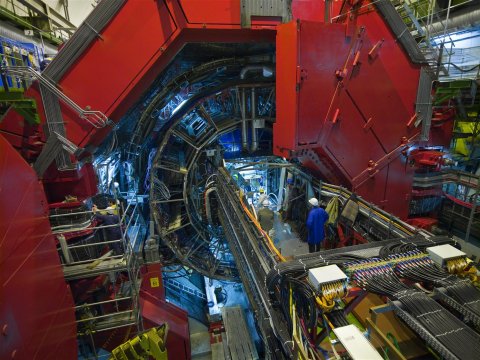Heavy Ion Physics
The universe started very hot and small, and the extreme phase of matter which permeated the early universe during the first microseconds after the big bang is called the Quark-Gluon Plasma (QGP). While we cannot travel back in time to study the QGP, we can recreate droplets of this primordial matter in the laboratory. We recently learned that these primordial droplets behave as a perfect liquid, and we try to understand how this is possible for matter with a temperature larger than a trillion degrees (1012 K). It is clear that at these temperatures the so-called strong interactions are still really strong and that in this quark gluon plasma we can study the fundamental theory of the strong interaction, Quantum Chromodynamics (QCD), in a completely novel regime.
We study the strong force in a completely novel regime
The best place to study matter at extreme densities and temperatures is at the CERN Large Hadron Collider (LHC). With the LHC we accelerate heavy nuclei to the highest energies possible and then collide them to create so-called little bangs. We study these little bangs, in which thousands of new particles are created, within the ALICE experiment. At the LHC ALICE is the only experiment optimized to measures the debris of these collisions and answer some of the still open fundamental questions of QCD.
In our group we contribute to the measurements themselves and play a strong role in the data analysis. In addition, we are active in the development, design and construction of the newest particle detectors, which are needed in the experiment.
We design and build cutting edge detectors
Collaboration
We are part of Nikhef, a national collaboration of a FOM institute in Amsterdam and several universities, which coordinates particle and astroparticle physics in the Netherlands. In addition, we are part of a worldwide research network, with a strong connection to the leading particle physics research center CERN in Geneva.
ALICE


